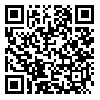Volume 19, Issue 131 (2022)
FSCT 2022, 19(131): 91-99 |
Back to browse issues page
Download citation:
BibTeX | RIS | EndNote | Medlars | ProCite | Reference Manager | RefWorks
Send citation to:



BibTeX | RIS | EndNote | Medlars | ProCite | Reference Manager | RefWorks
Send citation to:
Ghazanfari N, Falah F, Vasiee A, Tabatabaei yazdi F. Production of L-glutamate in fermentation medium containing food waste using native lactic acid bacteria and its comparison with industrial strain. FSCT 2022; 19 (131) :91-99
URL: http://fsct.modares.ac.ir/article-7-63872-en.html
URL: http://fsct.modares.ac.ir/article-7-63872-en.html
1- Ferdowsi university of Mashhad
2- Ferdowsi university of Mashhad , tabatabai@um.ac.ir
2- Ferdowsi university of Mashhad , tabatabai@um.ac.ir
Abstract: (959 Views)
L-glutamate is one of the most abundant amino acids in the body, which plays an important role in various cellular processes and also acts as a precursor of bioactive molecules, which has received much attention due to its medicinal and food applications today, and as an important amino acid. Industrial is produced commercially. L-glutamate is one of the metabolites produced by these bacteria, which is also biologically active. In this research, the production of L-glutamate by three autochthonous lactic acid bacteria (Lactobacillus brevis PML1, Lactobacillus plantarum 1058 and Lactobacillus fermentum 4-17) at three percentage levels of dairy sludge (0, 10, 20%), three levels of soybean meal (0, 2.5, 5%) and three levels of fermentation time (48, 84, 120 hr) were optimized using RSM. TLC was used for qualitative evaluation and HPLC was used for quantitative estimation of L-glutamate production, and then the antimicrobial and antioxidant properties of the fermentation extract were evaluated and compared with the control sample.
Article Type: Original Research |
Subject:
Extraction of effective compounds
Received: 2022/08/28 | Accepted: 2022/11/12 | Published: 2022/12/31
Received: 2022/08/28 | Accepted: 2022/11/12 | Published: 2022/12/31
Send email to the article author
| Rights and permissions | |
 |
This work is licensed under a Creative Commons Attribution-NonCommercial 4.0 International License. |









